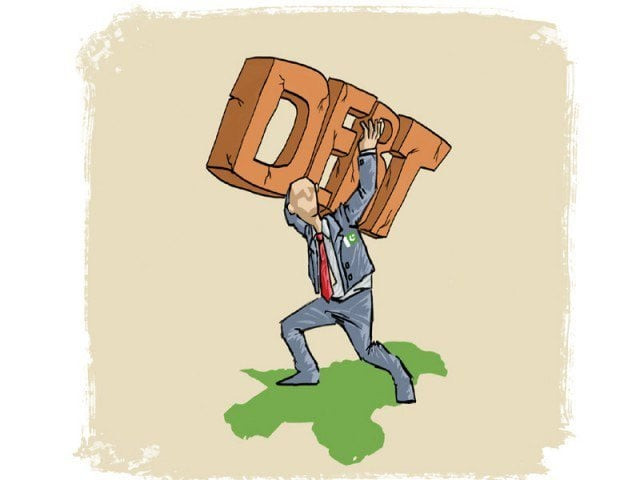Govt omits key data from debt report
Finance ministry says it has shared more information than required under law

The government has omitted critical information from its second debt policy statement that it was bound to share with the national assembly, compromising transparency and undermining the spirit of an act of the parliament.
The Ministry of Finance has submitted the Debt Policy Statement 2020-21 - covering the second year of the incumbent government, in the national assembly aimed at complying with requirements of the Fiscal Responsibility and Debt Limitation Act of 2005. However, some very critical pieces of information given in the 2019-20 report were missing from the new statement, including the status of compliance with the FRDL Act of 2005, showed the report that the Ministry of Finance uploaded on its website on Friday night.
The FRDL Act had been enacted in 2005 to ensure fiscal prudence, put the country on path of debt reduction and sustainable economic growth and let the elected representatives of the parliament know about these developments.
What FRDL 2005 law says?
Section 7 (3) of the FRDL Act says, “The debt policy statement shall contain, assessment of the federal government’s success and failure in meeting targets of total public debt to estimated GDP, evaluation of domestic and external borrowings strategies and provide policy advice, analysis of the foreign currency exposure of Pakistan’s external debt and providing consistent and authenticated information on public and external debt guarantees issued by the federal government.
The law also required that the finance ministry would tell the national assembly about the status of limiting federal fiscal deficit, ensuring that within a period of two financial years, beginning from financial year 2016-17, the total public debt shall be reduced to 60% of GDP and ensuring that within a period of five financial years, beginning from financial year 2018-19 total public debt shall be reduced by 0.5% every year and from 2023-24 and going up to financial year 2032-33 a reduction of 0.75% every year to reduce the total public debt to 50% of GDP.
Except the status of total public and government debt other information was missing, showed the comparison between the two reports. The government did share the breakup of the external debt but it did not analyse the numbers in light of sustainability indicators. The information about legally binding benchmarks set in FRDL Act of 2005 was also missing.
In the last report, the Pakistan Tehreek-e-Insaf (PTI) government had shared the position on all 10 selected public debt indicators in “table 2 of the 2019-20” report. This table has been deleted from the new report. There used to be information about the revenue deficit - total revenues minus current expenditures. This information has been deleted. In the previous report, the revenue deficit had been shown to deteriorate from 1.7% of GDP to 5.6%. In the new report, the government mentioned about the primary deficit - total revenues excluding interest payments. This indicator has improved as compared to the previous fiscal year.
The new report also mentioned the total public debt as a percentage of GDP that was recorded at 87.2% of GDP and was above the limit set by the parliament. Similarly, there was also mention of the total government debt as a percentage of total revenues, which deteriorated further.
However, the indicators about total public debt as percentage of the total revenue, total government debt as percentage of the total revenues, debt servicing cost as percentage of total revenues, interest servicing as percentage of total revenues, and debt servicing as percentage of GDP have been omitted.
Another critical table of external debt sustainability indicators, number 10 in the previous report, has also been deleted. In its Debt Policy Statement 2020-21, there was also no mention of the country’s external debt as percentage of its foreign exchange earnings, the external debt as percentage of foreign exchange reserves and the foreign exchange reserves as percentage of external debt and liabilities.
The public debt increased from 85% of GDP to 87.2% - way above the 60% limit set under the FRDL Act of 2005. For a developing country like Pakistan, a debt-to-GDP ratio below 50% is considered sustainable. Anything above this threshold is counted as dangerous in the long-term, according to independent economists. The reported stated that the government remained within the stated benchmarks of risk indicators and achieved all targets set for the fiscal year 2019-20. No borrowings were made from the State Bank of Pakistan (SBP) since July 2019 and Rs569 billion of the central bank debt was retired by the federal government, it added.
More than 90% borrowings were made through longer-term debt instruments, it added.
Official version
“The finance ministry had already published most of the information in its annual debt bulletin and thought there was no need to reproduce it in the policy statement,” said Director General Debt Office, Abdul Rehman Warraich, while speaking at The Express News show - The Review.
Warraich further said that the finance ministry has given more information in the Debt Policy Statement than required under the law. “The finance ministry has tried to bring only those big issues before the national assembly that are important and should be debated,” said the director general of the Debt Office.
Published in The Express Tribune, February 7th, 2021.
Like Business on Facebook, follow @TribuneBiz on Twitter to stay informed and join in the conversation.



















COMMENTS
Comments are moderated and generally will be posted if they are on-topic and not abusive.
For more information, please see our Comments FAQ